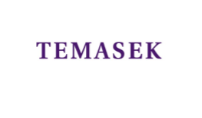Scaling up sustainable finance in Asia
I was struck by the theme of the conference when I first encountered it: “Scaling up sustainable finance in Asia”. Yes, sustainable finance is critical to the transition to green energy and the numbers are huge. But this is not the first energy transition we have been through. In fact, it is not even the second. However, I do not recall all of us having to do so much heavy lifting for the earlier energy transitions. Why should this time be different?
Different drivers for different transitions
The first energy transition from wood to coal was driven by economics: wood was becoming too expensive. This transition took hundreds of years, from the Middle Ages to about 1860 when coal accounted for over 90% of energy expended in England and Wales, which were at the forefront of the Industrial Revolution.
The second transition was from coal to oil or hydrocarbons. This was driven by technology: engines using oil were way faster and far more powerful. This second phase was comparatively swift, a fraction of the time taken for the first transition, but we are still talking about several decades. Some may argue this phase is not even over because we still have coal-fired plants which are in the process of being converted to hydrocarbon-generated plants.
I turn now to the transition to green energy, the third energy transition, which is different from the previous transitions.
So how is it different?
First, while the previous transitions took place over a relatively protracted period, the transition to green energy must be achieved in a much shorter time, in fact, in just over 25 years, if we are to do anything about climate change.
Second, we cannot just sit back and let market forces do the job, as was the case in the earlier two energy transitions. Previous transitions were driven by economics and technology and conferred competitive advantages, so we could rely on market forces, based on financial information. The green energy transition, on the other hand, is policy driven.
Because of the speed of change and because it is policy driven, we need carrots and sticks to incentivise capital flows and augment market forces.
The US is leaning towards a carrots approach. They are introducing green subsidies, and tax credits.
On the other hand, the EU appears to be leaning towards sticks through putting a price on carbon through their cap and trade system.
Singapore’s model has a little bit of both. We have carbon taxes, as well as subsidies in the form of the SG Eco Fund and the Enterprise Sustainability Programme, all of which are aimed at augmenting capital flows into green initiatives.
Third and final, these carrots and sticks and augmentation of capital flows are applied or based on non-financial information, as opposed to financial information.
So we need a strong regulatory framework for this non-financial information and we must make sure it is as robust and trusted as the one for financial information.
In another forum, I have spoken about the need for non-financial information to be available, comparable, and trusted.
Inspired by how this conference, the 4th Annual Regional Sustainable Finance Conference organised by ASIFMA has structured today’s discussions, I thought I would reorganise the elements into 4Ds: Disclosures, Data, Definition, and overarching these 3Ds is the fourth D, Discipline.
Striking the 4Ds
Starting with disclosures, this refers to making information available. SGX has mandated climate reporting for listed companies using a phased approach, starting with the most carbon intensive industries such as financial, food and agriculture and energy, followed by transport and building.
It is also important for information that is disclosed to be comparable. Without a common reporting standard, investors would not be able to compare one investee company with another.
We have signaled that we will adopt, when finalised, the reporting standards of the International Sustainability Standards Board, which is shaping up to be a global baseline.
In this respect, we are working closely with the Accounting and Corporate Regulatory Authority, which is the corporate regulator in Singapore, to extend climate reporting based on these international standards to both the listed and unlisted space.
Extending climate reporting to the unlisted space is significant for two reasons. To eliminate regulatory arbitrage by bad actors who might otherwise simply privatise, and to make it possible for companies to report their scope 3 emissions from their entire value chain.
The second D is data, and this refers to the ease of access to information. Having an information buffet will not be very useful for investors if there is no structured format for them to consume the data. SGX has therefore launched a sustainability disclosure platform called ESGenome.
Listed companies can input their climate data onto this platform in a structured and effective manner, and it will be in a common digital format that is easier for investors to use and access. Digital data is key to helping corporates and investors manage the wealth of information.
The third D refers to definition. This refers to a green taxonomy, or a taxonomy of sustainable activities.
This is different from disclosures and data. Those focus on the operational metrics that companies should report, but a taxonomy defines whether the level of performance is indeed sustainable.
The Monetary Authority of Singapore has set up a Green Finance Industry Taskforce, which is consulting on one such taxonomy. The proposal classifies economic activities according to a traffic light system, green for sustainable activities, amber for transition activities and red for unsustainable activities.
Can you imagine being able to see a company’s activities and revenues, an asset manager’s portfolio, or a bank’s loan book broken down into green, amber, or red? To see it visually, in the form of a pie or bar chart, could be very powerful.
Another way that definition can help in the transition is in allowing investors to more easily identify sustainable financial instruments. For example, SGX has launched a Sustainable Fixed Income initiative to recognise green, social, and sustainable bonds that channel the proceeds used to sustainable activities. In some other jurisdictions, there are ESG labelling regimes to certify qualifying funds as sustainable funds.
Finally, you need the 4th D, discipline to overarch the other 3Ds because you need to build, retain, and increase trust in the information.
Discipline comes in 2 parts: assurance and enforcement.
Currently for SGX-listed companies, we require an internal review of the sustainability reporting process by the internal audit function, to buttress the controls in place to ensure that information is reliable.
While our rules currently only require an internal review, more ambitious companies have committed to external assurance. What is holding us back from mandating assurance is the lack of an international standard for assurance, which hopefully is on the horizon. The International Auditing and Assurance Standards Board has said that it is targeting to consult on assurance standards for sustainability information in the second half of 2023.
There is also a challenge on the enforcement side of things. Today, the test for failing to disclose material information is whether the information will influence a reasonable investor’s decision to buy or sell shares. If the information is financial information, failure to disclose, or disclosing inaccurate financial information, is likely to satisfy the test. But how about non-financial information like climate information? Is it mainstream enough that we can confidently say that climate information will influence an investor’s decision to buy or sell shares? Such arguments could well hinder efforts to combat greenwashing.
Now this is a topic that warrants deeper attention, but perhaps a closer integration between disclosure and definition might be a useful start. If an investor had bought into a clearly identified ESG fund, and the fund has misled the public by overstating its climate credentials, it could be easier to argue that this must have influenced such an investor’s decision to buy into the fund.
Better odds of winning
By working on disclosure, data, definition, and discipline, we hope to strike the 4Ds.
For those who may not know, in Singapore, 4D is the local numbers betting game. The top prizes are relatively small compared to say the Mark 6 game in Hong Kong.
Unlike clinching the Mark 6 1st prize, which has odds of apparently 1 in about 14 million, I am happy to say the big prize for the 4Ds of green transition likely enjoys much better odds, if we pay attention to these areas.
On that note, thank you and I wish you an insightful conference ahead.























































First, please LoginComment After ~